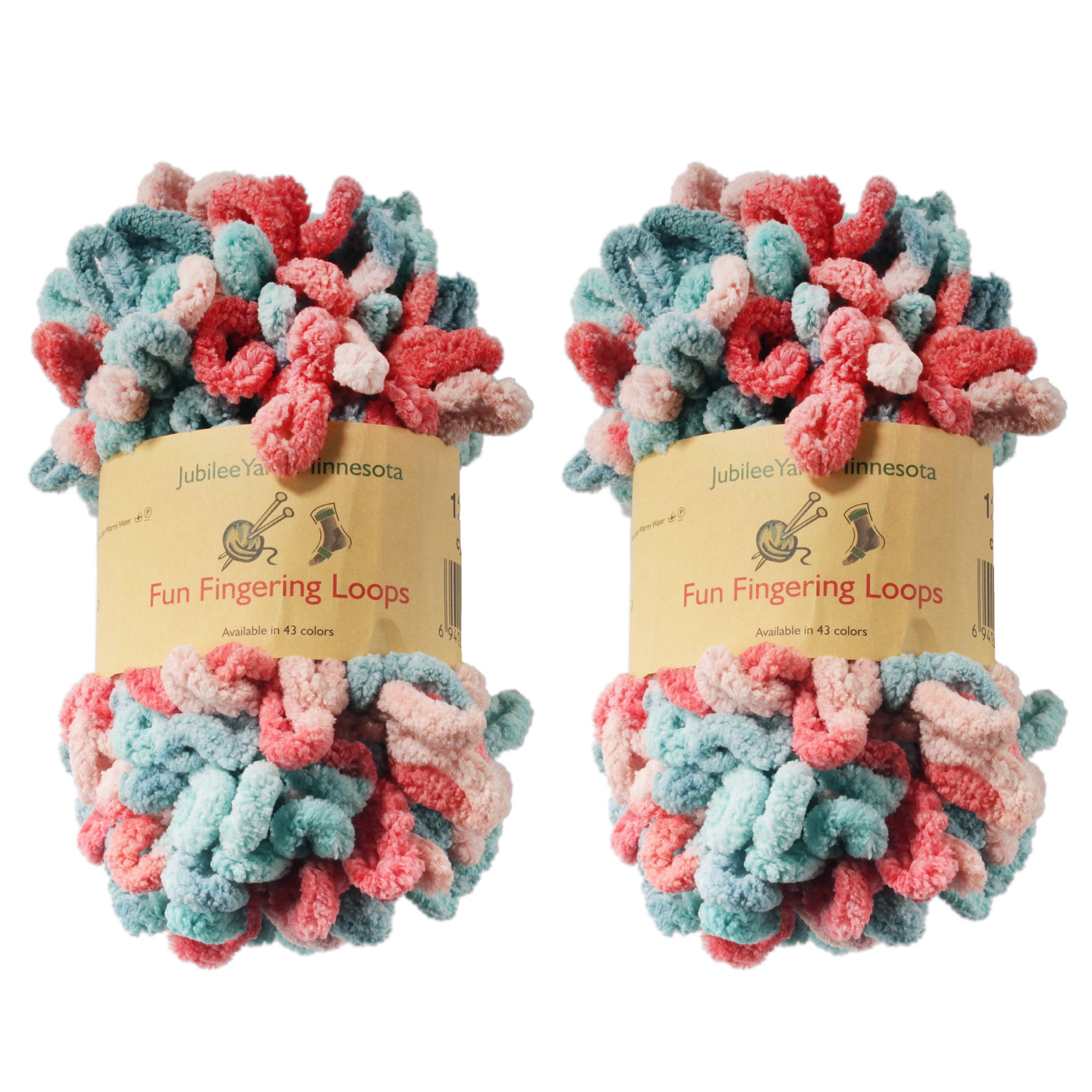
Bring the yarn to the back of the work between the needles and create a loop round one of your left fingers, now take the yarn to the front of work between the needles and purl as normal. Purl as normal but don’t pull the st off the left needle. You will have created 2 sts so bring the first st over the second st on your right needle. Knit as normal but don’t pull st off left needle, bring the yarn forward between the needles and create a loop around your left thumb, now take the yarn to the back of the work between the needles and knit the st as normal. Row 14: (P2tog in loopy st) rpt to end (6sts) Row 13: (K2tog in loopy st) rpt to end (11sts) Rows 2, 4, 6, 8, 10 and 12: Loopy st purl wise. Rows 1, 3, 5, 7, 9 and 11: Loopy st knit wise. Main hat Using 4mm needles cast on 22 sts in bright pink The patterns in my shop employ different combinations of the above stitches and many more, including some that I've created myself to achieve certain looks or mimic classic knitting styles, like brioche or horizontal chain stitch.If you are finding it difficult to understand I have also created a collection of great starter patterns that will teach you basic stitches (with photo tutorials and stitch guides to help you): You can find those Basic Starter patterns here. If you're ready to try it for yourself and looking for some easy patterns to start with, click here.


#YOU TUBE LOOPY YARN WITH FINGERS HOW TO#
This criss-cross stitch tutorial from is a good one.Īnd that's it! You now know how to start and finish your blanket, change yarn, and how to performing the following stitches: This is an important technique in creating textured blankets and is the first step towards learning how to do cable-knit stitches! This video from Stitches n Scraps shows you how to do twisted stitches:Īnd finally, you're probably ready to try criss-cross stitches. Once you've mastered those concepts, here are a few more stitch techniques to try: This first video by Toni at TL Yarn Crafts walks you through knit and purl stitches, changing yarn, and binding off, and even includes instructions on how to knit a simple throw. If you are new to loop yarn, I recommend watching a few to familiarize yourself with some of the techniques.

There are many great video tutorials on YouTube that give a brief introduction to loop yarn and walk you through some simple stitches. One of the reasons I started writing patterns for loop yarn was because I wanted to replicate traditional knitting designs - I have no interest in switching to standard knitting, I just want to figure out how to make loop yarn do what I want!

Loop Yarn has developed a strong following (especially in the Middle East and Russia, where they use Alize Puffy brand loop yarn), and as loop yarn knitters have become more experienced, they have craved more intricate patterns. The benefit of having pre-formed loops is that you don't have to worry about knitting gauge - the loops are uniform in size.īecause it also comes in such a large gauge (Bulky/Super Chunky), knitting items such as blankets is very quick, and the synthetic yarn is washable and dryable - making it a versatile and forgiving yarn for the beginner. Loop Yarn was originally intended as a yarn for children or beginners, who may find needles intimidating or complicated. Puffy More/Graph It Instruction Sheet *NEW*īuying from international sellers on EtsyĪlize Puffy More: Learn more about this innovative new loop yarn!


 0 kommentar(er)
0 kommentar(er)
